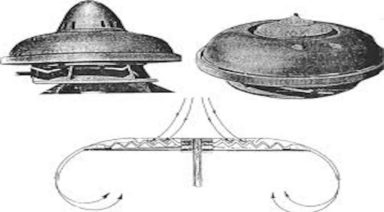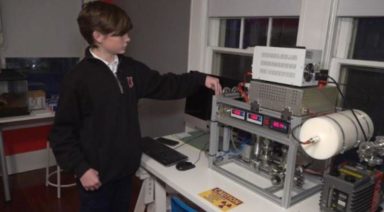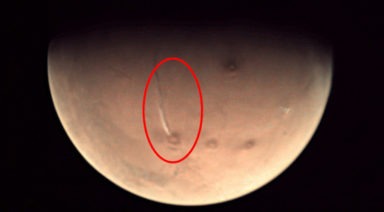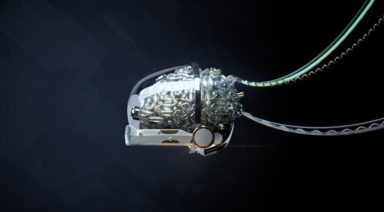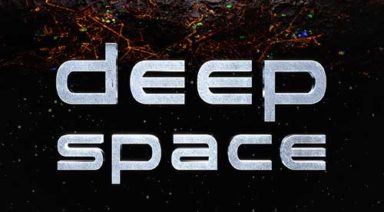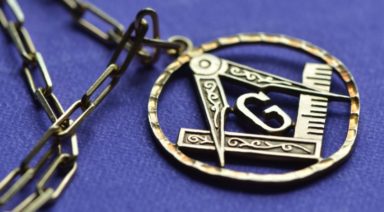The CIA’s In-Q-Tel is Investing in Startups That Can Predict the Future

We tend to unknowingly or neglectfully expose a lot of our personal data on the internet and often times it’s not our fault. Social networks and digital applications, marketed as a utility or source of entertainment, can also be used for mining data and giving corporations incredible insight into our personal lives. That data is then analyzed and stored to develop a profile that decides the best way to target us with advertisements.
That’s not so surprising anymore; we’ve become keen on recognizing these marketing techniques and come to expect them. It becomes unsettling however when the CIA has a role in this game and seeds start-ups to develop technology to mine data for its clandestine agenda. This is also nothing new, but not many people are aware of the CIA’s venture capital arm, In-Q-Tel, which has backed some of Silicon Valley’s most prevalent advents, influencing widely used Google apps and possibly even Facebook. So, what is In-Q-Tel, and should we be concerned?
In-Q-Tel’s Keyhole Becomes Google Earth
In the early 2000s, the development of Google Earth made geospatial technology an exciting prospect in the tech world. Unsurprisingly, this technology was controversial and banned in some countries due to national security concerns and privacy issues. What is also unsurprising is that it was originally developed by a startup that was funded by In-Q-Tel, called Keyhole EarthViewer. The National Geospatial-Intelligence Agency, or NGA, was cultivated out of this new technology as a parallel branch to the NSA that focuses on exploiting and analyzing geographical information and activity.
In-Q-Tel’s budget started off at $28 million in its first year and has been somewhat hazy ever since. After Sept. 11, 2001, the government’s black budget for intelligence agencies increased dramatically, with the CIA now receiving about $14.7 billion. In-Q-Tel can access this money without having to fully disclose its spending. It also doesn’t participate in requests for comments or interviews with the media.
In-Q-Tel, since its inception in 1999, continues to fund start-ups in the tech world ranging from skincare lines to novel drone technology, but much of its investment goes into data mining. These tools collect, store, and analyze data to create profiles on individuals, groups, and events that are of interest to the CIA, law enforcement, and corporations. Often these programs mine platforms like Twitter, Facebook, and Instagram to monitor activist protests, influential “decision-makers,” and trends. One day these algorithms surveil our personal data and activity, and the next they’re being sold to corporations for advertising.

In-Q-Tel ‘s Keyhole, Inc developed Google Earth
Who is in In-Q-Tel?
In-Q-Tel is headed by Gilman Louie, a former video game designer, turned venture capitalist. Some have made note of Louie’s connections with board members of the venture capital firms that gave Facebook the funding to become the social media juggernaut it is today. One of its connections is to James Breyer, a partner and board member of Accel, the company that invested $12.7 million in Facebook’s Series A funding.
Louie and Breyer sat together on the board of military defense contractors, BBN, known for essentially helping to create email and the internet. Facebook’s second round of funding came from a company called Greylock Venture Capital, headed by Howard Cox, who also sat on In-Q-Tel’s board.
Another interesting connection that has been made with Louie is his role with Niantic, the mobile gaming company that created Pokèmon Go. Louie was added to the board of the company for his strategic insight into both gaming and venture capital investment. The augmented reality technology for Pokèmon Go was also a product of Keyhole, Inc., the In-Q-Tel funded start-up that became Google Earth.
Users of the game are required to allow the program to access personal data ranging from geolocation services to camera access, and it even has the capability to remotely read, modify, or delete files on a user’s phone. The program can track where users are, where they’ve been, what they look like, and multitudes of personal information that could be used to create profiles and spy on individuals. This begs the question; is this a beta test for a larger CIA-sponsored program?
What is In-Q-Tel Investing In?
While this may seem overly paranoid, it falls in line with other In-Q-Tel tech investments. Dataminr is one such blatantly named startup that uses Twitter data to spot trends that can be used to benefit law enforcement, ostensibly monitoring for terrorist threats. But what else can this data be used for and what are the ethical concerns with the profiles that are being built with this information?
Edward Snowden’s exposé showed the NSA’s ability to use metadata to paint a very intrusive image of innocent civilians. This technology could be easily manipulated with a deluge of false tweets sent to intentionally cause panic, considering the tweets aren’t verified. An attack of this nature could be carried out by hackers or even the government itself in a false flag operation.
Other companies In-Q-Tel has invested in that monitor and analyze social media data include GeoFeedia, Pathar, and TransVoyant. But one of the more invasive projects in this space, a program named Palantir, is as unsettling in its scope as its name infers. Palantír, in Lord of the Rings, is an omniscient crystal ball that can see anything, anywhere, including into the past and future.
The company was created by Peter Thiel, founder of PayPal and former board member of Facebook with other In-Q-Tel venture capitalists. Palantir created a system, much like the premise of the movie Minority Report, where law enforcement can predict crime before it happens. It has been touted for its success in military applications and is being implemented in law enforcement with “predictive policing” efforts. The prescience of Philip K. Dick’s dystopian police state is uncanny. Some believe this is already a factor in the recent disparities in police shootings and as an instigating force in growing police militarization.

In-Q-Tel invests in predictive policing tech
In-Q-Tel’s business model made it highly successful in a number of ways, and it has essentially become an indicator of success in the venture capital world, with every $1 of investment from In-Q-Tel drawing up to $15 from private investors. So, if In-Q-Tel decides it likes a startup’s idea, its investment will draw significant attention from other venture capitalists, letting the private sector fund technology that benefits the CIA’s clandestine programs.
In-Q-Tel also only answers to the CIA instead of traditional investors, despite the CIA’s funding coming from taxpayer dollars. It is considered a non-profit that is unconcerned with monetary earnings, but rather tech capital – again easy to do when you don’t have to answer to investors. A contract with the CIA is now like gold for tech startups looking for seed funding, given the success, influence, and amount of money In-Q-Tel has, but where should we draw the line for government access and transparency? If this technology is being used to spy on us, perpetuate the militarization of law enforcement, and potentially create a more aggressive police state, shouldn’t we have a say in these things?
Did the Philadelphia Experiment Really Happen?

The World War II-era is notorious for mysterious Nazi experiments involving weapons and strange esoteric technology. But the U.S. also conducted its fair share of tests on new and nefarious weaponry and wartime tactics. Some of the most famous minds of the time, including Nikola Tesla and Albert Einstein, were even employed to execute the military complex’s will, occasionally leading to some perplexing stories.
One of the more bizarre accounts involves the supposed attempt of the Navy to develop a technology that could make an entire ship invisible to the naked eye. But these experiments had some unintended consequences that led to the project being shut down and buried until a man who claimed to have worked on the project blew the whistle on its cover-up. The stories that ensued became the inspiration for a 1980s, sci-fi movie and the Netflix series, Stranger Things, but could these stories actually have some validity to them?
The Philadelphia Teleportation Experiment
A man named Al Bielek is a central figure in these stories and his account has been ridiculed as simply being contrived nonsense, but the historical context and his detailed narrative are intriguing and possibly part of a true story, shedding light on clandestine government operations, one of which was known as the Philadelphia Experiment.
According to Bielek, in the late 1930s, the Navy was working on a project using electromagnetism to essentially develop an invisibility cloak for its warships. Around that time, Bielek said that Einstein was directing a program of degaussing ships by wrapping them in electromagnetic coils, to protect against magnetic mines planted by the Nazis. Tesla purportedly took this technology and parlayed it into the cloaking experiment, having some initial success with a small boat. After failed attempts with larger ships, Tesla gave up and the project was handed over to Dr. John von Neumann, who also worked on the Manhattan Project.
Von Neumann eventually succeeded in making the U.S.S. Eldridge, a Cannon-class destroyer escort, invisible for a short period of time on the first occasion. According to Bielek, one of Tesla’s inventions, a Zero Time Reference Generator, lent itself to this success. This device supposedly locks the Earth’s magnetic fields and acts as a cosmological reference with the electromagnetic fields at the center of the galaxy.
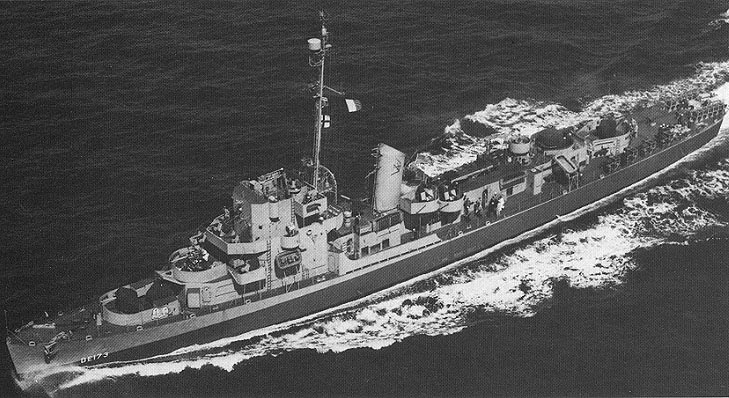
The USS Eldridge, involved in the Philadelphia Experiment
Bielek said that Tesla gave von Neumann a cryptic warning about a “personnel problem” that might occur in their experiment, but he continued anyway and the Navy trained a crew specifically for the operation. Then on August 12, 1943, they ran a second test. After being shrouded in a “green, ozone-laden haze” the ship purportedly disappeared for several hours, during which it traveled through time and then rematerialized. Upon its return, sailors were reported to be violently ill, some engulfed in flames, and others molecularly bonded with the ship. Bielek, however, said he and his brother, who was aboard the ship at the time, jumped off during the time warp and remained in 1983 on Montauk, Long Island at another secretive government facility also experimenting with time travel, known as the Montauk Project.
Bielek gives an intriguing explanation for how his time travel was possible, relating to Tesla’s Zero Time Generator. He said that Tesla’s device was the key for the ship to return back to its original location. According to Bielek, we live in a five-dimensional reality, with time being the fourth and fifth dimensions. He said that every human is given a set of locks that lock them in a point of time from which they came, but that the experiment ruptured those time references, upon returning to Philadelphia.











